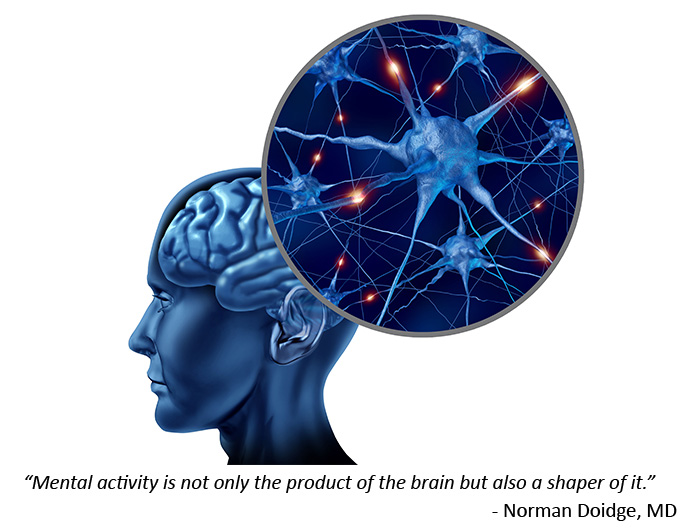If you could change one thing about meetings at work or in your community, what would you change? If you could change one thing about the way you interact with others, what would you change?
I’d like people to listen more attentively so they could understand one another better. And I’d like to be less impatient with and critical of people who tend to talk over others.
Here’s the good news: we can change both these things at least in ourselves and possibly in others through how we interact with them. If we pay focused attention to choosing our thoughts, attitude, and behavior, over time such changes become routine because the brain starts to change itself. It becomes easier to think, feel, and interact in constructive ways and not get sidetracked by the occasionally troublesome actions of others (e.g., interrupting, dominating a meeting, criticizing others).
This is because our brains are neuroplastic (i.e., they can change themselves). As defined by psychiatrist Norman Doidge, “Neuroplasticity is the property of the brain that enables it to change its own structure and functioning in response to activity and mental experience.”
Every day we are learning more about how we can use our minds (our awareness, attention, and actions) to change our brains for everything from pain management, degenerative disorders like Parkinson’s, and traumatic brain injuries to emotional reactivity and impulsive actions. Hundreds of studies now demonstrate that our mental activity changes our brains.
Think of your brain as if it were a web of country roads. Some roads have deep tracks with a grassy mound in the center that scrapes the bottom of your car. This makes it difficult for you to drive on different parts of the road. Even if you want to create new ruts, it’s easier to just drive in the old ruts, thereby making them deeper. Conversational habits are like ruts: we deepen the grooves when we follow predictable, familiar chains of thought and behavior (e.g., impatience, not listening, interrupting others). Over time, it can become difficult to do anything else. It takes conscious choice, effort and focus to lay down new synaptic tracks in the brain.
The point is we now know that we can change our brains wittingly or unwittingly. We can deepen destructive ruts or create new constructive tracks or strengthen existing ones. Personally, I am committed to tap this miraculous ability of the brain and change it wittingly. I want to develop a deep familiarity with the activity and reactivity of my brain and strengthen my ability to navigate through unhelpful thoughts, reactive emotions and fight or flight behaviors so I can make conscious choices about how to interact with others ever more constructively.
What might happen if you and I chose to develop a good habit of, for example, listening attentively, asking questions of genuine curiosity, and sharing our thoughts and ideas as just that, not as the only way to think about a topic? What might the impact be on our families, communities, clients, customers and co-workers? Not only might these behaviors become easier, they might also become more of a norm in your meetings.
I take to heart the words of research psychiatrist and psychologist Richard Davidson, “Much of psychology had accepted the idea of a fixed program unfolding in the brain, one that strongly shapes behavior, personality, and emotional states. That view is shattered by the discoveries of neuroplasticity…The message I take from my own work is that I have a choice in how I react, that who I am depends on the choices I make, and that who I am is therefore my responsibility.”
Neuroplasticity gives us a chance to change and a response-ability to do so, for good.


2 thoughts on “A Chance to Change”